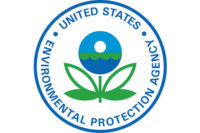Energy Reduction
First, attention needs to be paid to the changing landscape regarding refrigeration equipment energy efficiencies. The refrigeration sector continues to wend its way through new rules governing the efficiency of commercial refrigeration equipment including walk-in coolers and freezers. It is a complicated process because different regulations apply to different types of equipment and their respective sizes.
In that regard, the U.S. Department of Energy (DOE) has issued final guidance concerning automatic commercial ice makers and commercial and industrial equipment test procedures.
 The fact that efforts are being made in this regard pleases the advocacy group Alliance to Save Energy.
The fact that efforts are being made in this regard pleases the advocacy group Alliance to Save Energy.
In a statement issued in early September shortly before the final guidance document was announced, the alliance said it “applauds the Department of Energy’s issuance of the Notices of Proposed Rulemaking for commercial refrigeration equipment and walk-in coolers and freezers. This latest action demonstrates the DOE is serious about helping Americans save energy and money.”
Venting Issues
While reports of refrigerant venting violations are few and far between, when they are announced, they can be whoppers. In 2004, the Dominick’s supermarket chain in the Chicago area paid an $85,000 fine for venting HCFC-22 in six of its stores.
The ante has gone up quite a bit.
In a settlement agreement announced Sept. 4, 2013 by the U.S. Environmental Protection Agency (EPA), the supermarket chain Safeway, which owns Dominick’s, has agreed to pay a $600,000 civil penalty and implement a corporate-wide plan to significantly reduce its emissions of HCFCs from refrigeration equipment at 659 of its stores nationwide. That process is estimated to cost approximately $4.1 million. The settlement involves the largest number of facilities ever under the Clean Air Act’s (CAA’s) regulations governing refrigeration equipment, the EPA said.
The settlement resolves allegations that Safeway Inc. violated the federal CAA by failing to promptly repair leaks of R-22 and failed to keep adequate records of the servicing of its refrigeration equipment.
According to the EPA, “Safeway will now implement a corporate refrigerant compliance management system to comply with stratospheric ozone regulations. In addition, Safeway will reduce its corporate-wide average leak rate from 25 percent in 2012 to 18 percent or below in 2015. The company will also reduce the aggregate refrigerant emissions at its highest-emission stores by 10 percent each year for three years.”
The EPA announcement did not specify when the violations took place.
Safeway Inc., headquartered in Pleasanton, Calif., will be closing stores in the Dominck’s chain by next year due to underperforming sales, according to reports.
Safety Issues
Issues related to proper safety procedures takes on additional importance when the refrigerant used is ammonia.
According to an announcement made on Aug. 12, 2013 by the Occupational Safety and Health Administration (OSHA), a refrigeration warehouse in Honolulu faces $251,330 in fines after federal and state investigators discovered health and safety violations.
Many of the violations were related to the fact that the facility operates on ammonia refrigeration. Others were related to issues that might be found in any facility where workers are present.
Inspections at Unicold Corp. were conducted in February by the U.S. Department of Labor’s OSHA and Hawaii’s Department of Labor and Industrial Relations’ Occupational Safety and Health Division.
According to OSHA, 58 serious violations related to hazards associated with process safety management of highly hazardous chemicals in the ammonia refrigeration system; missing stair railings; unguarded floor openings on stairway platforms; deficiencies in the company’s plan for the response to workplace emergencies; and inadequate electrical equipment.
Other violations included locked and sealed exit doors, failure to keep exit routes free and unobstructed, and failure to label exit routes and post signs clearly indicating the route to the nearest exit.
Inspectors found 13 of the exit doors were locked from the outside and sealed shut, and that workers could not open or reach emergency exit doors because storage racks filled with pallets of products blocked the doors.
Publication date: 10/21/2013






Report Abusive Comment